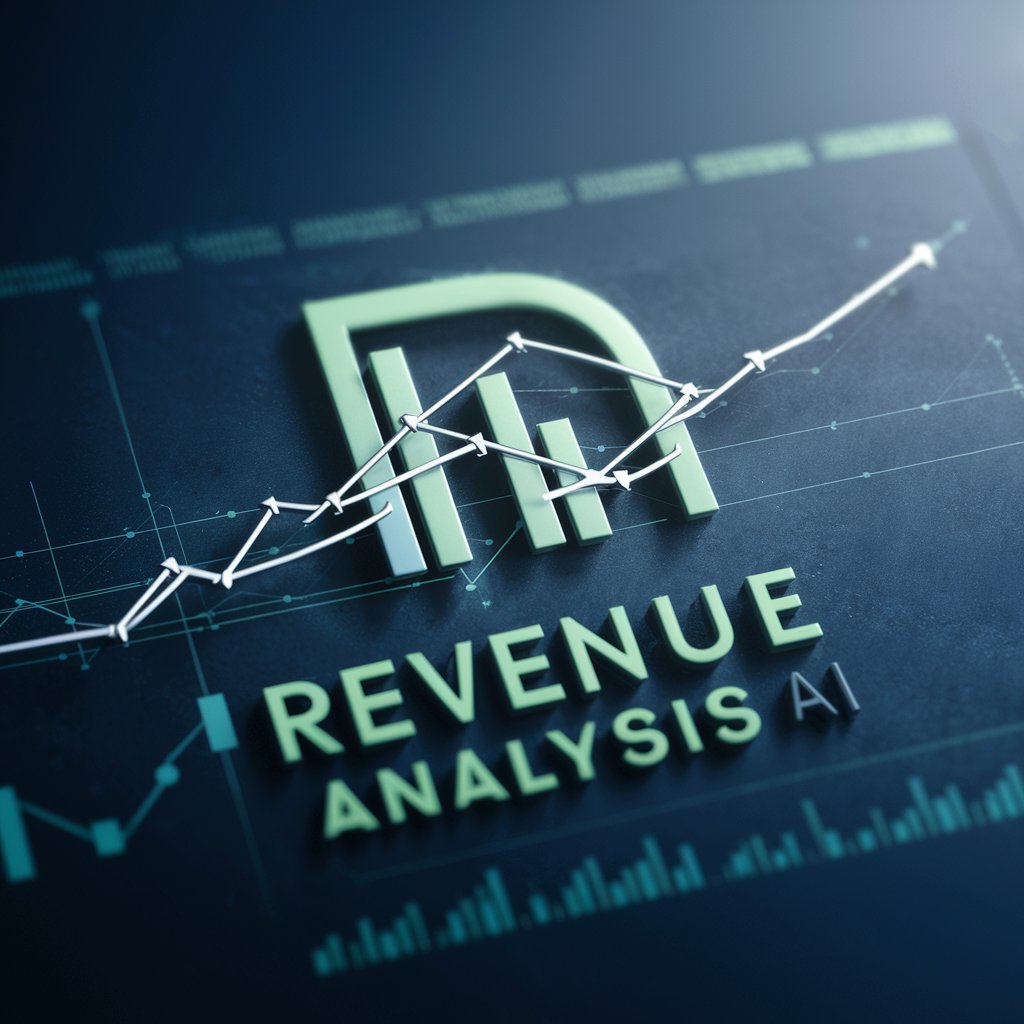Revenue Analysis AI - Financial Data Analysis

Welcome to Revenue Analysis AI, your partner in financial insights.
Empowering Financial Decisions with AI
Analyze this financial dataset to identify key revenue trends and patterns.
Compare the current revenue figures with past performance to highlight significant changes.
Forecast future revenue trends based on historical data in this financial report.
Identify anomalies in the revenue stream and provide insights on potential causes.
Get Embed Code
Overview of Revenue Analysis AI
Revenue Analysis AI is a specialized tool designed to analyze financial data with a focus on revenue streams. It is engineered to preprocess financial datasets, identify trends, patterns, and anomalies within revenue figures, expenses, and other financial metrics over specific periods. The AI leverages historical data to forecast future revenue trends, offering a comprehensive analysis that includes insights on influencing factors, comparative analysis with past performance, and future projections. For example, it can take an Excel file containing years of sales data across multiple regions and product lines, preprocess this data to ensure accuracy, and then analyze it to identify growth trends, seasonal patterns, or unexpected dips in revenue. This enables businesses to make informed decisions about where to focus their efforts for revenue optimization. Powered by ChatGPT-4o。

Core Functions of Revenue Analysis AI
Data Preprocessing
Example
Automatically cleaning and structuring years of sales data from multiple sources into a unified format.
Scenario
A retail company merging online and in-store sales records to create a single, clean dataset for analysis.
Trend Analysis
Example
Identifying upward or downward trends in sales data over time, segmented by product lines or geographic regions.
Scenario
A technology firm tracking the revenue performance of its various software products globally to allocate marketing resources effectively.
Anomaly Detection
Example
Spotting unusual spikes or drops in revenue that deviate from established patterns, indicating potential data errors or significant market events.
Scenario
An e-commerce platform detecting unexpected changes in sales following a marketing campaign, to evaluate its impact.
Revenue Forecasting
Example
Using historical sales data to predict future revenue, applying statistical models and machine learning algorithms.
Scenario
A manufacturing company forecasting next quarter's revenue to plan production schedules and inventory management.
Comparative Analysis
Example
Comparing current revenue figures with past performance to assess growth, identify trends, and benchmark against industry standards.
Scenario
A hospitality chain comparing current year's revenue with previous years to evaluate the success of new services and locations.
Who Can Benefit from Revenue Analysis AI?
Business Analysts and Financial Planners
Professionals who require detailed insights into financial performance to inform strategic decisions, budgeting, and financial planning.
Marketing and Sales Teams
Teams that need to understand revenue patterns to tailor marketing strategies, allocate resources efficiently, and set realistic sales targets.
Small to Medium-sized Enterprises (SMEs)
SMEs that lack the extensive analytical capabilities of larger corporations can leverage AI insights to compete more effectively in their markets.
Startups
Startups needing to monitor their financial health closely, optimize revenue streams, and forecast future performance to attract investors.

How to Use Revenue Analysis AI
1. Start Your Free Trial
Visit yeschat.ai to begin your free trial, accessible without the need for login or a ChatGPT Plus subscription.
2. Upload Financial Data
Prepare and upload your Excel files containing financial data, including revenue, expenses, and other financial metrics.
3. Configure Analysis Parameters
Set your analysis parameters, such as the time period for analysis, specific financial metrics of interest, and any particular comparative analysis requirements.
4. Review Automated Analysis
Allow the AI to process your data, after which you can review the automated analysis, including trends, patterns, and forecasts.
5. Apply Insights
Utilize the insights provided by Revenue Analysis AI for strategic planning, financial optimization, and making informed business decisions.
Try other advanced and practical GPTs
Second Chance MCAT Tutor
Empowering MCAT retakes with AI-driven guidance.

Human vs AI
Unraveling AI's societal impact with wisdom and humor.

Wealth Mentor
Empower Your Wealth with AI-Led Mentorship

Games Master
Master Any Board Game with AI

Tutor Personal de Turco
AI-Powered Turkish Language Mastery

Ten Minutes
Unlock knowledge in minutes with AI

Travel Mate
Explore Smarter with AI-Powered Travel Planning

LOMLOE - D39/22 - GEOGRAFÍA E HISTORIA
AI-powered Curriculum Companion

VT Real Estate Guide
Empowering Real Estate with AI

Thumbnail Creator
Craft Eye-Catching Thumbnails with AI

대표기도 도우미
Empowering Your Prayers with AI

OA خبير ريادة الأعمال
Empowering Entrepreneurs with AI Insight

Frequently Asked Questions about Revenue Analysis AI
What financial data formats can Revenue Analysis AI process?
Revenue Analysis AI can process various formats, primarily focusing on Excel files that contain detailed financial data, including revenue, expenses, and key financial metrics.
Can Revenue Analysis AI forecast future revenue trends?
Yes, by analyzing historical financial data, Revenue Analysis AI can forecast future revenue trends, helping businesses plan and strategize effectively.
How does Revenue Analysis AI identify financial anomalies?
The AI uses advanced algorithms to analyze financial data, identifying anomalies by comparing current data against historical trends, patterns, and expected performance metrics.
Can Revenue Analysis AI compare my company's performance with industry standards?
While Revenue Analysis AI focuses on analyzing your company's financial data, it can provide comparative analyses if provided with relevant industry standard metrics for comparison.
How can I optimize my business's revenue streams using insights from Revenue Analysis AI?
Revenue Analysis AI provides actionable insights and recommendations based on data analysis, which can help in optimizing pricing strategies, reducing unnecessary expenses, and enhancing overall financial performance.
